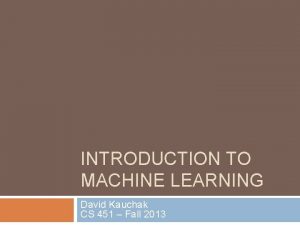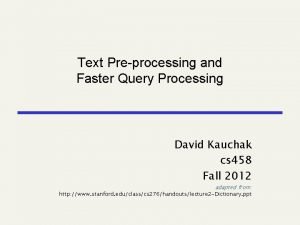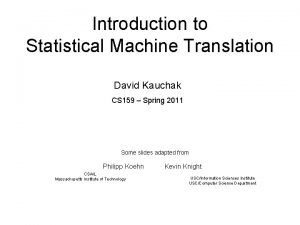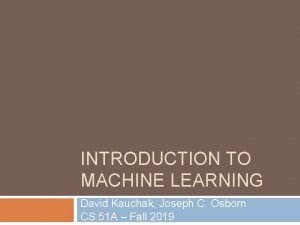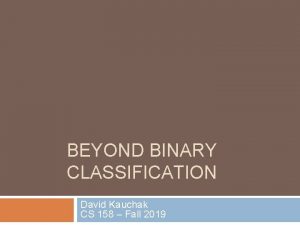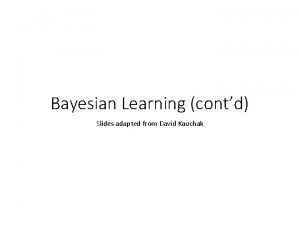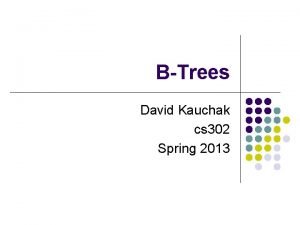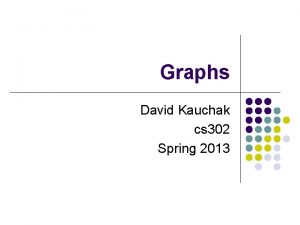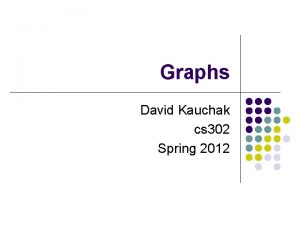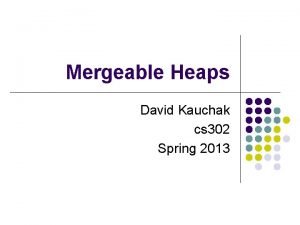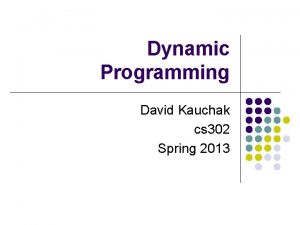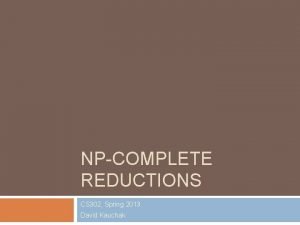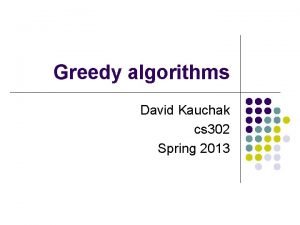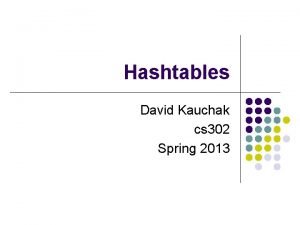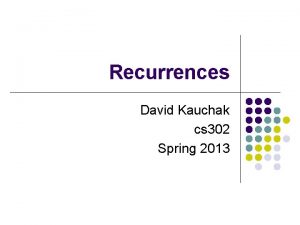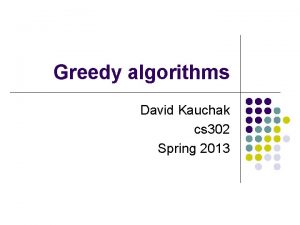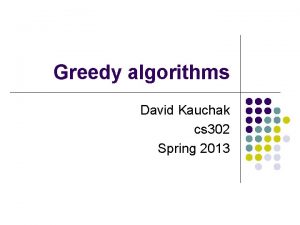Review CS 302 Spring 2013 David Kauchak Admin












- Slides: 12

+ Review CS 302 Spring 2013 David Kauchak

+ Admin n Final n posted on the course web page on Monday n due Sunday at 11: 59 pm n time-boxed (3 -4 hours) n You may use: n n your book n your notes n the class notes n ONLY these things Do NOT discuss it with anyone until after Sunday at 11: 59 pm

+ Test taking advice n Read the questions carefully! n Don’t spend too much time on any problem n if you get stuck, move on and come back n When you finish answering a question, reread the question and make sure that you answered everything the question asked n Think about how you might be able to reuse an existing algorithm/approach n Show your work (can’t give you partial credit if I can’ t figure out what went wrong) n Don’t rely on the book/notes for conceptual things n Do rely on the book for a run-time you may not remember, etc.

+ Where we’ve been n 21 assignments n n 67 problems! 23 classes n Number of slides? n n 1537!!! Hung out for: 27 hours

+ How far have we come… n Describe the algorithm for a depth first search traversal n Write a function f(a, b) which takes two character string arguments and returns a string containing only the characters found in both strings in the order of a. Write a version which is order N-squared and one which is order N. n You're given an array containing both positive and negative integers and required to find the sub-array with the largest sum in O(n) time. Write a routine in C for the above. n Reverse a linked list n Insert in a sorted linked list n Write a function to find the depth of a binary tree

+ High-level approaches Algorithm tools n n Divide and conquer n assume that we have a solver, but that can only solve subproblems n define the current problem with respect to smaller problems n Key: sub-problems should be non-overlapping Dynamic programming n Same as above n Key difference: sub-problems are overlapping n Once you have this recursive relationship: n figure out the data structure to store sub-problem solutions n work from bottom up (or memoize)

+ High-level approaches Algorithm tools cont. n n Greedy n Same idea: most greedy problems can be solve using dynamic programming (but generally slower) n Key difference: Can decide between overlapping sub-problems without having to calculate them (i. e. we can make a local decision) Flow n Matching problems n Numerical maximization/minimization problems

+ Data structures A data structure n Stores data n Supports access to/questions about data efficiently n n the different bias towards different actions No single best data structure Fast access/lookup? n If keys are sequential: array n If keys are non-sequential or non-numerical: hashtable n Guaranteed run-time: balanced binary search tree n Lots and lots of data: B-tree

+ Data structures Min/max? n heap Fast insert/delete at positions? n linked list Others n stacks/queues n extensible data structures n disjoint sets

+ Graphs Graph types n n n directed/undirected weighted/unweighted trees, DAGs cyclic connected Algorithms n n n connectedness contains a cycle traversal n dfs n bfs

+ Graphs Graph algorithms cont. n minimum spanning trees n shortest paths n single source n all pairs n topological sort n flow

+ Other topics… n NP-completeness n proving NP-completeness n reductions
 Cs 451
Cs 451 Lebensversicherungsgesellschaftsangestellter
Lebensversicherungsgesellschaftsangestellter David kauchak
David kauchak Translation process
Translation process David kauchak
David kauchak David kauchak
David kauchak David kauchak
David kauchak Introduction to teaching kauchak
Introduction to teaching kauchak Four seasons korean movie
Four seasons korean movie Months that are in spring
Months that are in spring Amway fast track incentive 2021
Amway fast track incentive 2021 World history spring final exam review answers
World history spring final exam review answers World geography spring final review
World geography spring final review
